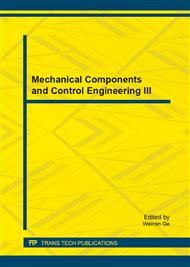p.625
p.629
p.633
p.637
p.641
p.647
p.653
p.657
p.661
Remaining Driving Range Estimation for Electric Vehicles through Information Fusion Method
Abstract:
Electric vehicle (EV) is one of the current research focuses due to its environmental friendliness, but the inaccuracy in remaining driving range (RDR) estimation lowers the consumers’ confidence on EVs. This paper introduces a remaining driving range estimation method based on information fusion (RDRIF), in which the RDR is determined by the fusion of the calculated range (calculation of the present battery and vehicle consumption states) and the cumulated range (cumulation of the real-traveled distance) to provide a accuracy RDR result. The RDRIF algorithm was embedded in a type of pure electric vehicle, and a set of vehicle experiments was carried out on a dynamometer test system. Two urban driving cycles representing normal and aggressive driving conditions are implemented in the tests to validate the effectiveness of RDRIF. The results show that the RDRIF could provide a stable and convergent estimation result under both driving conditions compared with the traditional methods, and the estimation error could be rapidly limited to ±5%, which effectively reduces the passengers’ range anxiety.
Info:
Periodical:
Pages:
641-646
Citation:
Online since:
October 2014
Authors:
Price:
Сopyright:
© 2014 Trans Tech Publications Ltd. All Rights Reserved
Share:
Citation:


